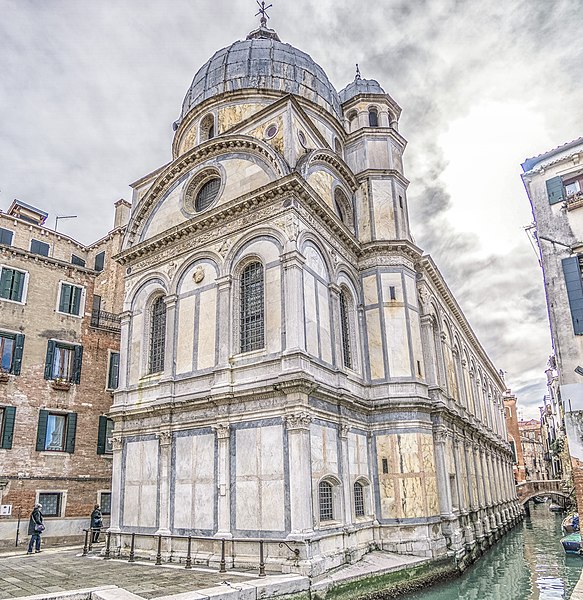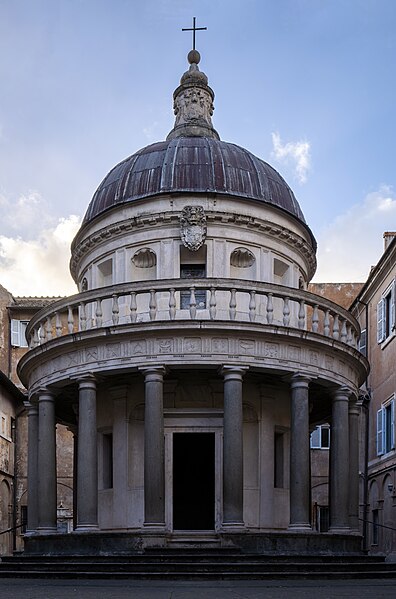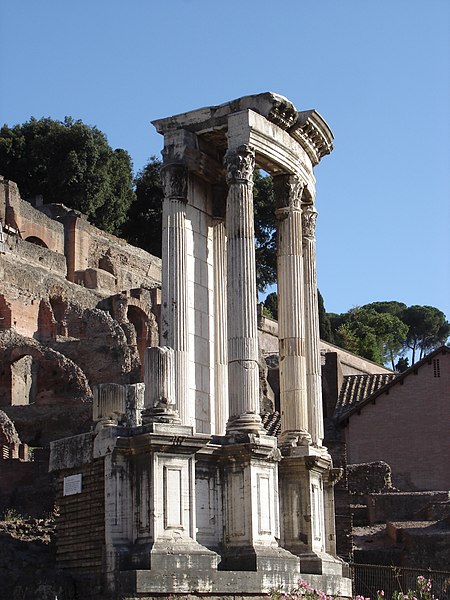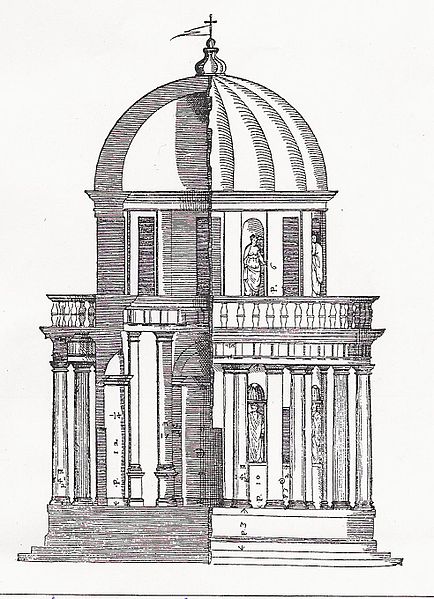Venetian Renaissance architecture
Venetian Renaissance architecture began rather later than in Florence, not really before the 1480s, and throughout the period mostly relied on architects imported from elsewhere in Italy. The city was very rich during the period, and prone to fires, so there was a large amount of building going on most of the time, and at least the facades of Venetian buildings were often particularly luxuriantly ornamented.
Santa Maria dei Miracoli, 1480s, by Pietro Lombardo, who was mainly Venice's leading sculptor.
The huge woodcut View of Venice by Jacopo de' Barbari, 1500, was considered the definitive work depicting the city for much of the century.
Jacopo Sansovino's Palazzo Corner della Ca' Grande, replacing a building burnt down in 1532. Compare the much simpler sides.
Palazzo Dario, 1480s, with characteristic Venetian chimney-pots
Renaissance architecture is the European architecture of the period between the early 15th and early 16th centuries in different regions, demonstrating a conscious revival and development of certain elements of ancient Greek and Roman thought and material culture. Stylistically, Renaissance architecture followed Gothic architecture and was succeeded by Baroque architecture and neoclassical architecture. Developed first in Florence, with Filippo Brunelleschi as one of its innovators, the Renaissance style quickly spread to other Italian cities. The style was carried to other parts of Europe at different dates and with varying degrees of impact.
Tempietto del Bramante, San Pietro in Montorio, Rome, 1502, by Donato Bramante. This small temple marks the place where St. Peter was crucified.
The Temple of Vesta in Rome was the model for Bramante's Tempietto.
Palazzo Senatorio, seat of the municipality of Rome. It has been a town hall since AD 1144, making it the oldest town hall in the world.
Palladio's engraving of Bramante's Tempietto








